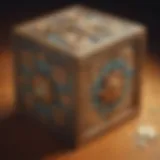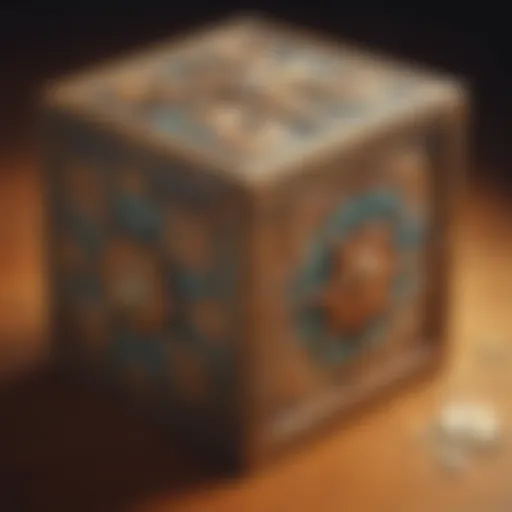Unveiling the Intricacies of Area and Perimeter Calculation: A Detailed Guide for Young Minds
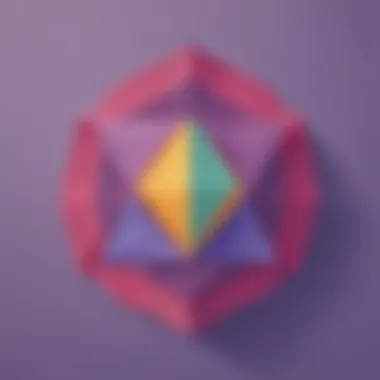

Creative Activities
Explore the world of area and perimeter through exciting craft ideas that elementary school children can easily replicate. These hands-on activities aim to enhance children's understanding of mathematical concepts in a fun and engaging way. By creating colorful geometric shapes and measuring their dimensions, kids can visually grasp the relationship between area and perimeter. Step-by-step guides accompany each craft project, providing detailed instructions for young learners to follow along and create their own masterpieces. The educational value of these activities lies in their ability to foster critical thinking, spatial reasoning, and problem-solving skills while promoting a love for mathematics.
Fun Quizzes
Engage in stimulating quizzes that cover various topics related to area and perimeter. These quizzes feature a mix of question types, including multiple-choice, true or false, and fill-in-the-blank, designed to challenge children's knowledge and analytical thinking. By reinforcing key mathematical concepts in a playful manner, these quizzes help solidify understanding and improve retention. The diverse quiz topics available on ElemFun range from basic shape calculations to real-world applications of area and perimeter, offering a comprehensive review of the material. With interactive features and instant feedback, these quizzes make learning about area and perimeter both informative and entertaining.
Fact-Based Articles
Delve into a repository of fact-based articles that cover a wide range of topics related to area and perimeter. These engaging articles present complex mathematical ideas in a clear and accessible manner, making them perfect for elementary school students seeking to deepen their understanding. Through interactive visuals, examples, and real-world applications, these articles aim to demystify the concepts of area and perimeter, showcasing their relevance in everyday life. Readers can further explore related topics by accessing additional resources, including links to interactive tools, videos, and related articles, enriching their learning experience beyond the traditional classroom setting.
Understanding Area and Perimeter
In this section, we delve into the critical concepts of area and perimeter in a manner that is tailored to resonate with the inquisitive minds of elementary school students. Understanding area and perimeter forms the bedrock of mathematical knowledge, offering essential insights into how shapes are measured and compared. By comprehending these concepts, young learners can enhance their spatial awareness and problem-solving skills, laying a strong foundation for future mathematical endeavors. Through a systematic exploration of the intricacies of area and perimeter, this guide aims to demystify complex mathematical principles and empower students to engage with geometry in a meaningful way.
Definition of Area and Perimeter
Defining area and perimeter is essential for grasping the fundamental principles of geometry. Area refers to the measurement of the space enclosed within a shape, denoting the surface area it covers. On the other hand, perimeter signifies the total length of the boundary outlining a shape. Understanding the distinction between area and perimeter is crucial, as it allows students to discern the quantitative attributes of shapes and make informed comparisons based on their sizes. By internalizing the definitions of area and perimeter, young learners can navigate geometric calculations with confidence and precision, paving the way for advanced mathematical concepts.
Importance of Area and Perimeter
The significance of area and perimeter lies in their practical applications across various fields, ranging from architecture to art and beyond. Proficiency in calculating area and perimeter equips students with the tools to analyze and design structures, interpret maps, and solve spatial problems effectively. Furthermore, understanding the concepts of area and perimeter fosters critical thinking skills and logical reasoning, nurturing a holistic approach to problem-solving. By emphasizing the importance of area and perimeter in this guide, we aim to instill a sense of curiosity and exploration in young minds, encouraging them to leverage mathematical knowledge for creative pursuits and academic excellence.
Calculating Area
Calculus Imperative of Area in this manual lies in its innate contribution to fundamental geometry. The concept of area deeply provisions vital insights into the spatial magnitudes of geometric entities, shaping a solid foundation for budding mathematicians. By unraveling the enigmatic realm of area computations, learners garner a profound understanding of how size and space intertwine harmoniously in the mathematical domain. Critical elements pertaining to Calculating Area encompass profound methods of numerical derivation and spatial comprehension, igniting cognitive reasoning within students.
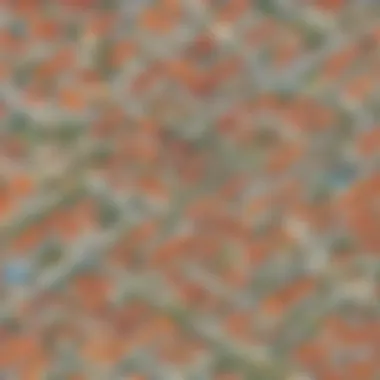
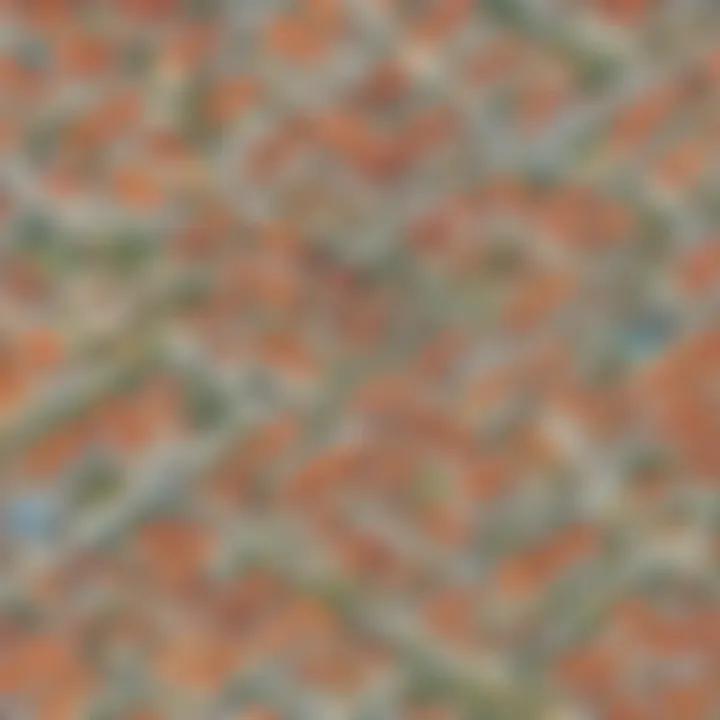
Area of Square and Rectangle
Formulas for Area Calculation
Area Calculation's bedrock rests upon meticulously crafted formulas specially tailored to gauge the spatial expanse enclosed within square and rectangular confines. Manifesting as robust mathematical expressions, these formulas delineate the area based on the length and breadth of the figures, offering a succinct and reliable approach to ascertaining spatial coverage. The inherent beauty of Formulas for Area Calculation lies in their simplicity and applicability across diverse geometric scenarios, rendering them a quintessential toolkit for geometric dissection. Despite their ubiquity, Formulas for Area Calculation boast unparalleled versatility and reliability, serving as a cornerstone in geometric computations within this exposé.
Step-by-Step Examples
Immersive instructional vignettes grace the pedagogical landscape in the realm of Step-by-Step Examples, elucidating the intricate nuances of area determination through systematic procedural breakdowns. These examples intricately navigate learners through the labyrinthine pathways of area computation, shedding light on the sequential methodologies crucial for accurate spatial quantification. A defining facet of Step-by-Step Examples lies in their intuitive approach towards unraveling complex mathematical abstractions, offering a comprehensive roadmap for learners to navigate the intricate terrain of geometric quantification. Despite their efficacy, Step-by-Step Examples reverberate with pedagogical brilliance, equipping learners with the requisite skills for unraveling the mysteries of spatial measurements within the contextual backdrop of this scholarly discourse.
Area of Triangle and Circle
Methods for Calculating Area
Meticulously tailored techniques encompass the theological core of area derivation within the triangular and circular domains, portraying a visage of systematic precision in geometric quantification. Nestled within these methodologies lies a treasure trove of geometric significance, encapsulating the essence of spatial calculation through multifaceted approaches. The crux of Methods for Calculating Area resides in their procedural elegance and mathematical efficacy, rendering them indispensable tools in the architectural arsenal of area computation. Striving for optimal geometric solutions, Methods for Calculating Area serve as beacons of mathematical prowess, guiding learners through the labyrinthine corridors of triangular and circular spatial evaluation within the rich tapestry of this exegesis.
Practical Applications
Real-world contextualization amplifies the pedagogical resonance of Practical Applications, enshrining the theoretical tenets of area computation within palpable, real-world scenarios. By bridging the chasm between abstract mathematical concepts and tangible applications, Practical Applications breed a culture of applicative ingenuity among learners, fostering a holistic understanding of area's omnipresent role in the fabric of everyday existence. The quintessence of Practical Applications lies in their transmutative potential, inspiring learners to contextualize abstract concepts in concrete, real-world settings and unravel the intricate tapestry of geometric applications within the domain of this scholastic anthems.
Calculating Perimeter
Calculating the perimeter is an essential concept when exploring geometrical shapes. By understanding perimeter, students can grasp how to measure the boundary of two-dimensional figures, paving the way for more complex mathematical calculations. Through this section, we will delve into the intricacies of perimeter calculation, offering a step-by-step guide that simplifies this mathematical process for young learners.
Perimeter of Regular Shapes
Calculating Perimeter for Different Shapes
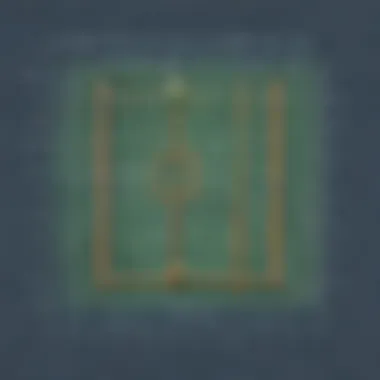
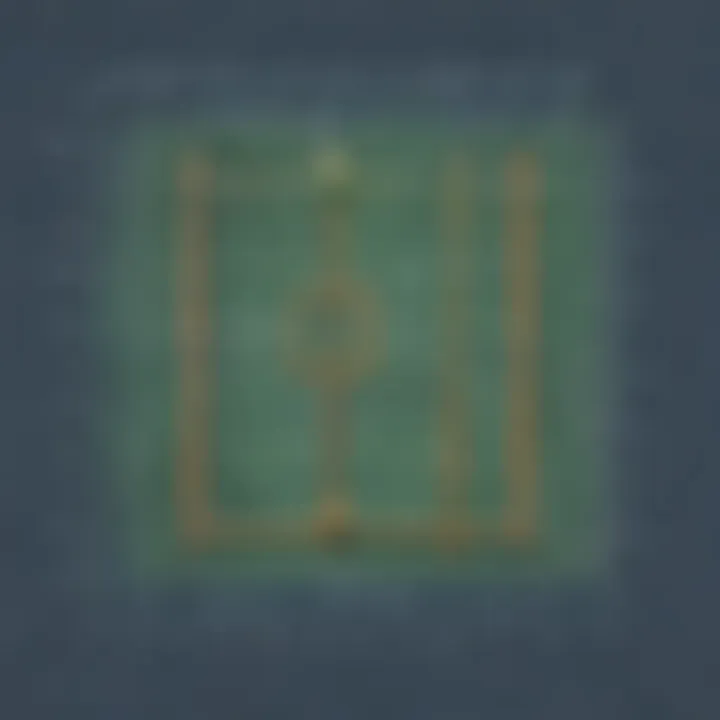
Calculating the perimeter for different shapes involves understanding the unique attributes of each shape and how to measure their boundaries effectively. This aspect of perimeter calculation plays a crucial role in providing students with the necessary skills to determine the total distance around regular shapes like squares, rectangles, and circles. By mastering the calculations specific to each shape, students can develop a deeper understanding of how perimeter functions in the context of these geometric figures.
Real-World Examples
Real-world examples serve as invaluable tools for applying theoretical knowledge to practical scenarios. By exploring real-life situations where perimeter calculations are relevant, students can appreciate the significance of this mathematical concept in everyday life. From measuring the perimeter of a school field to calculating the fencing required for a garden, these examples help students bridge the gap between theory and real-world applications, enhancing their problem-solving skills.
Perimeter of Irregular Shapes
Tackling Perimeter Challenges
Tackling perimeter challenges involves navigating the complexities of irregular shapes and determining optimal strategies to calculate their boundaries accurately. This aspect of perimeter calculation pushes students to think critically, analyze the unique characteristics of irregular shapes, and apply suitable techniques to find the perimeter efficiently. By addressing these challenges, students can hone their spatial reasoning skills and enhance their problem-solving abilities.
Strategies for Measurement
Effective measurement strategies are crucial when dealing with irregular shapes and calculating their perimeters. By employing specific measurement techniques tailored to irregular figures, students can overcome obstacles related to determining the boundaries of these shapes accurately. Strategies such as breaking down irregular shapes into simpler components or using approximation techniques can simplify perimeter calculations, allowing students to approach complex shapes with confidence and precision.
Practical Applications of Area and Perimeter
Exploring the practical applications of area and perimeter is pivotal in understanding the real-world relevance of these mathematical concepts. As fundamental principles in geometry, area and perimeter play a significant role in everyday life, from measuring spaces to constructing objects. By grasping the applications of area and perimeter, young learners can enhance their problem-solving skills, spatial awareness, and critical thinking abilities.
Real-Life Examples
Applying Area and Perimeter Concepts in Daily Life
Applying area and perimeter concepts in daily life involves utilizing these mathematical principles to solve practical problems encountered in various situations. Whether measuring the floor space for carpeting or determining the amount of paint needed for a room, understanding area and perimeter is essential. The key characteristic of applying area and perimeter concepts in daily life is its direct relevance to everyday activities, making mathematical calculations tangible and applicable. By incorporating these concepts, individuals can streamline decision-making processes and optimize resource utilization efficiently. This aspect of the article aims to highlight the significance of translating theoretical knowledge into practical applications, fostering a deeper understanding of mathematical concepts in real-life scenarios.
Problem-Solving Scenarios
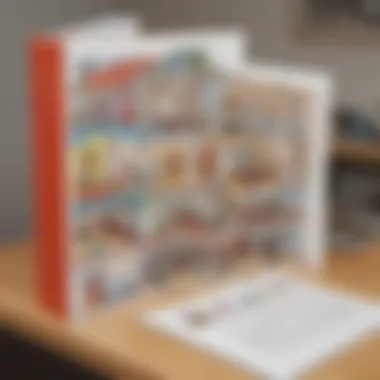

Problem-solving scenarios present challenges that require applying area and perimeter calculations to formulate solutions. These scenarios aim to test the learner's ability to analyze complex problems, strategize effective solutions, and enhance critical thinking skills. The key characteristic of problem-solving scenarios is their capacity to engage the learner in hands-on application, promoting a holistic understanding of mathematical concepts. By presenting diverse problems requiring area and perimeter calculations, this section encourages creativity, logical reasoning, and perseverance. Implementing problem-solving scenarios in the context of this article provides a dynamic learning experience, where learners can strengthen their mathematical skills through interactive and stimulating challenges.
Geometrical Puzzles
Exploring geometrical puzzles expands the application of area and perimeter concepts into engaging activities that blend fun with learning. These puzzles challenge individuals to think critically, analyze geometric shapes, and deduce solutions using area and perimeter calculations. The section encapsulates two core aspects: challenging problem-solving skills and enhancing spatial awareness.
Challenge Your Problem-Solving Skills
The challenge your problem-solving skills puzzles present intricate problems that require applying advanced area and perimeter calculations to unravel. By engaging in these puzzles, learners can enhance their analytical skills, logical reasoning, and mathematical aptitude. The key characteristic of these puzzles is their ability to stimulate cognitive abilities while fostering a deep understanding of geometric properties. Embracing the challenge your problem-solving skills puzzles within the context of this article empowers learners to think creatively, experiment with different strategies, and refine their problem-solving techniques.
Enhancing Spatial Awareness
Enhancing spatial awareness puzzles focus on developing a profound comprehension of spatial relationships, shape configurations, and geometric properties. By delving into these puzzles, learners can hone their visual-spatial skills, perspective-taking abilities, and geometric visualization capacity. The key characteristic of enhancing spatial awareness puzzles lies in their capacity to cultivate a three-dimensional perspective, improving spatial reasoning and mental manipulation of shapes. Integrating these puzzles within this article aims to provide a holistic learning experience, where learners can expand their geometric understanding beyond traditional calculations and engage in immersive spatial explorations.
Conclusion
The holistic understanding of area and perimeter equips young learners with the essential skills required to navigate geometrical challenges efficiently. By unraveling the complexities through a systematic approach, children can develop problem-solving abilities, critical thinking skills, and an improved spatial awareness which go beyond the confines of classroom education. This sound grasp of mathematical principles sets the stage for advanced learning and nurtures a deeper appreciation for the beauty of geometric relationships and patterns prevalent in our surroundings.
Furthermore, introducing young minds to the concept of area and perimeter fosters a sense of curiosity and inquisitiveness, encouraging them to explore the fascinating world of mathematics with newfound zeal and confidence. By emphasizing the practical implications of these concepts, students can bridge the gap between theoretical knowledge and its real-life implications, paving the way for a more enriching and engaging learning experience.
Summary of Key Points
Throughout our comprehensive exploration of area and perimeter, several key principles have emerged that form the bedrock of geometric understanding for elementary school children. Firstly, we have elucidated the fundamental definitions of area and perimeter, providing a clear delineation of these concepts that serve as the building blocks for further learning.
Secondly, the exhaustive coverage of calculating area has equipped young learners with the tools to compute the space enclosed by various shapes with precision and accuracy. By presenting step-by-step examples and practical applications, students can apply these formulas to real-world scenarios, enhancing their problem-solving skills and analytical prowess.
Thirdly, the discourse on calculating perimeter has shed light on the perimeter of regular and irregular shapes, offering strategies for accurate measurement and a deeper appreciation of geometrical intricacies. By navigating through challenges posed by irregular shapes, children can refine their measurement techniques and think critically about geometric properties.
Encouragement for Further Exploration
As we draw the curtains on this enlightening journey through the realm of area and perimeter, it is imperative to underscore the importance of further exploration for young learners. Encouraging students to delve deeper into mathematical concepts beyond the confines of this guide fosters a spirit of inquiry and stimulates intellectual curiosity.
By actively seeking out geometrical puzzles, challenging problem-solving scenarios, and engaging in practical applications of area and perimeter in everyday life, students can fortify their mathematical acumen and develop a deeper appreciation for the beauty of numerical relationships. Embracing further exploration not only solidifies the foundational knowledge imparted through this guide but also fuels a continuous strive for academic excellence and intellectual growth among young minds.
